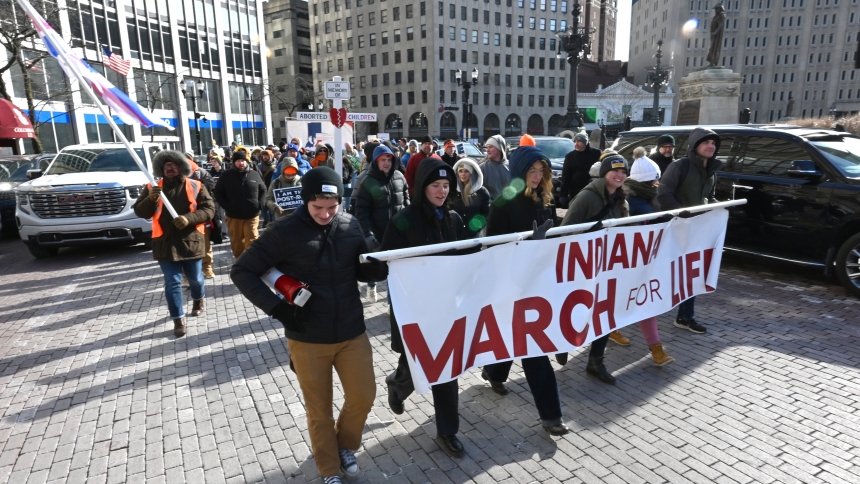
My family never watched "It's a Wonderful Life" when I was growing up. I saw it for the first time when I was around 30 years old, at a special Christmas screening at the Coronado Theater in Rockford, Illinois. I found myself in tears at the end, and not because I had been emotionally manipulated. The film is a near-perfect representation of certain realities of community that I had always felt instinctively and which, at that time, I had been writing about for the better part of a decade (and now, for the better part of four).
I have watched "It's a Wonderful Life" at least 25 times since, and perhaps a few more, most recently with my family at another restored theater in Wabash, Indiana. Unlike other favorite films of mine, it gets better with each viewing. I prefer to see it on the big screen, surrounded by people, rather than in the comfort of our own home, precisely because it is a movie about community.
It's become fashionable in recent decades to argue that George Bailey, the protagonist of the film, is nevertheless not the movie's hero. I have no argument with that. George is a flawed character, and his redemption, in the end, is a very Christian one, not wrought through his own efforts but very much in spite of himself - hardly the classic definition of a hero.
For a while, certain libertarians - overly proud of their lack of sentiment and comfortable with the crabbed state of the souls they're not sure they have - tried to argue that the true hero of the movie is Mr. Potter (and many of the same crowd had similarly argued that Ebenezer Scrooge was a better man at the beginning of A Christmas Carol than at the end). There's no need to take such ideological arguments seriously.
More recently, some Catholic writers, in particular, have argued that George's wife, Mary, is the true hero of the movie, and I have found myself drawn to that interpretation. Her patience and quiet resolve throughout most of the film, and (during George's downward spiral) her implied Christian faith, make her a very attractive character indeed - more so, in many ways, than George.
But watching "It's a Wonderful Life" again through that lens, I noticed that Mary, too, has her moments of selfishness. They may be less frequent than George's, but they end in the same way: Recognizing, in spite of her own desires, what she should do in that moment, and stepping up and doing it. And she does so for the same reason that George continues, in crisis after crisis, to do the right thing: She recognizes that her life is a thread woven into the fabric of the community of Bedford Falls, and that pursuing her own desire and will to the detriment of others would mar that fabric irrevocably.
The reason "It's a Wonderful Life" remains so powerful nearly 80 years after its release is, I would argue, not because George or Mary (and certainly not Mr. Potter) is a "hero," but because director Frank Capra tapped into the desire for community that beats in every human heart and that is so essential to the Christian vision. Even today, when our virtual "connections" have led to the widespread destruction of face-to-face and day-to-day literal connections, our hearts still long for the ties that George Bailey strained so long against.
Despite our manifold sins and failings, we desire to be woven into the tapestry of something bigger than ourselves, to love and be loved, to respond to the sacrifices of others with a sacrifice of ourselves.
That inchoate desire of each human heart finds its fulfillment in the manger in Bethlehem and on the cross at Calvary. "It's a Wonderful Life" ends with a rendition of Auld Lang Syne, but as the entire community of Bedford Falls (with the notable exception of Mr. Potter) gathers in George and Mary Bailey's living room, they are singing a very different hymn: "Hark the herald angels sing / Glory to the newborn King."
Scott P. Richert is publisher for OSV.
Caption: A wax figure of actor Jimmy Stewart is seen with a painted backdrop resembling a scene from "It's A Wonderful Life" at Madame Tussauds Hollywood during a press preview June 11, 2009. (OSV News photo/Fred Prouser, Reuters)


